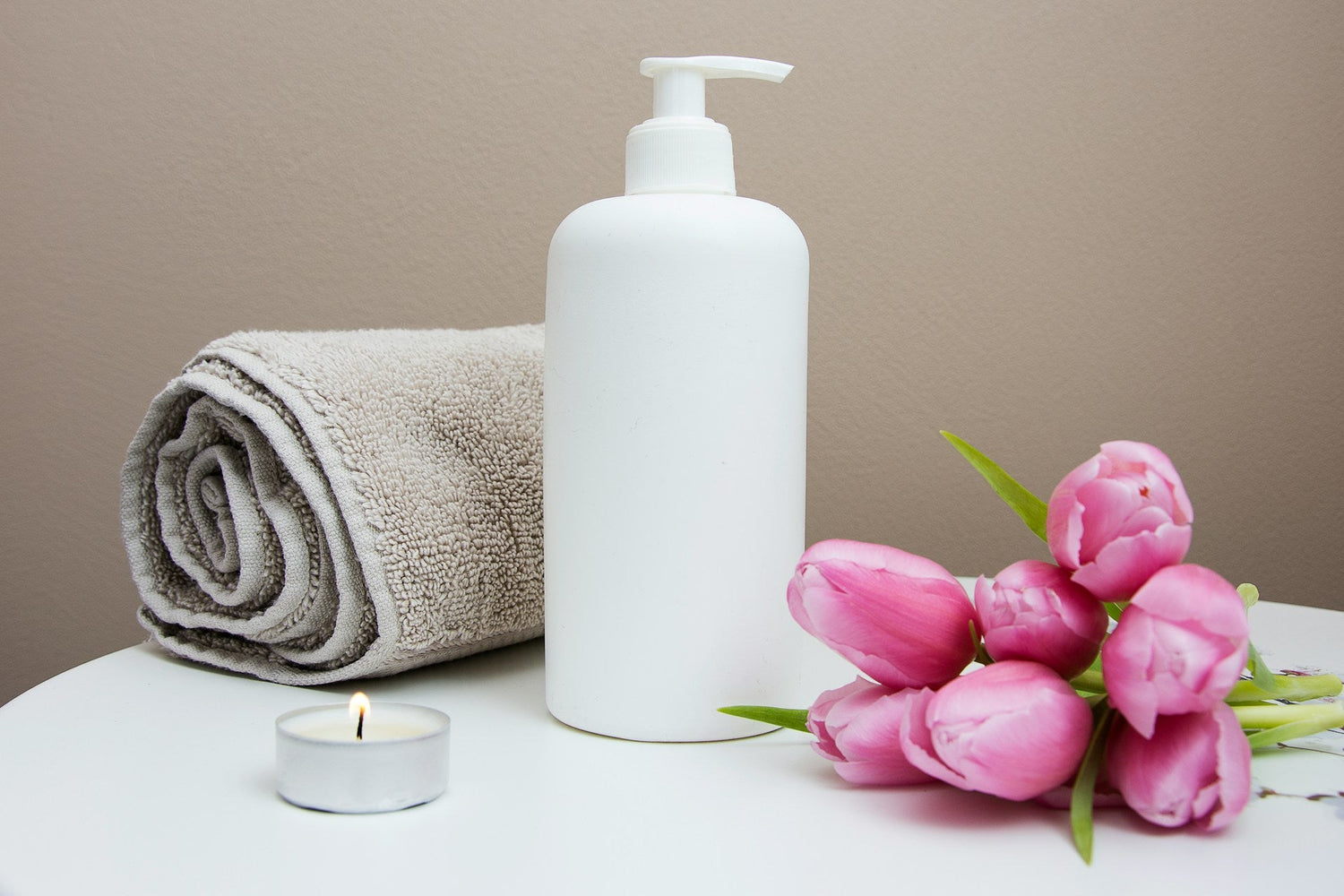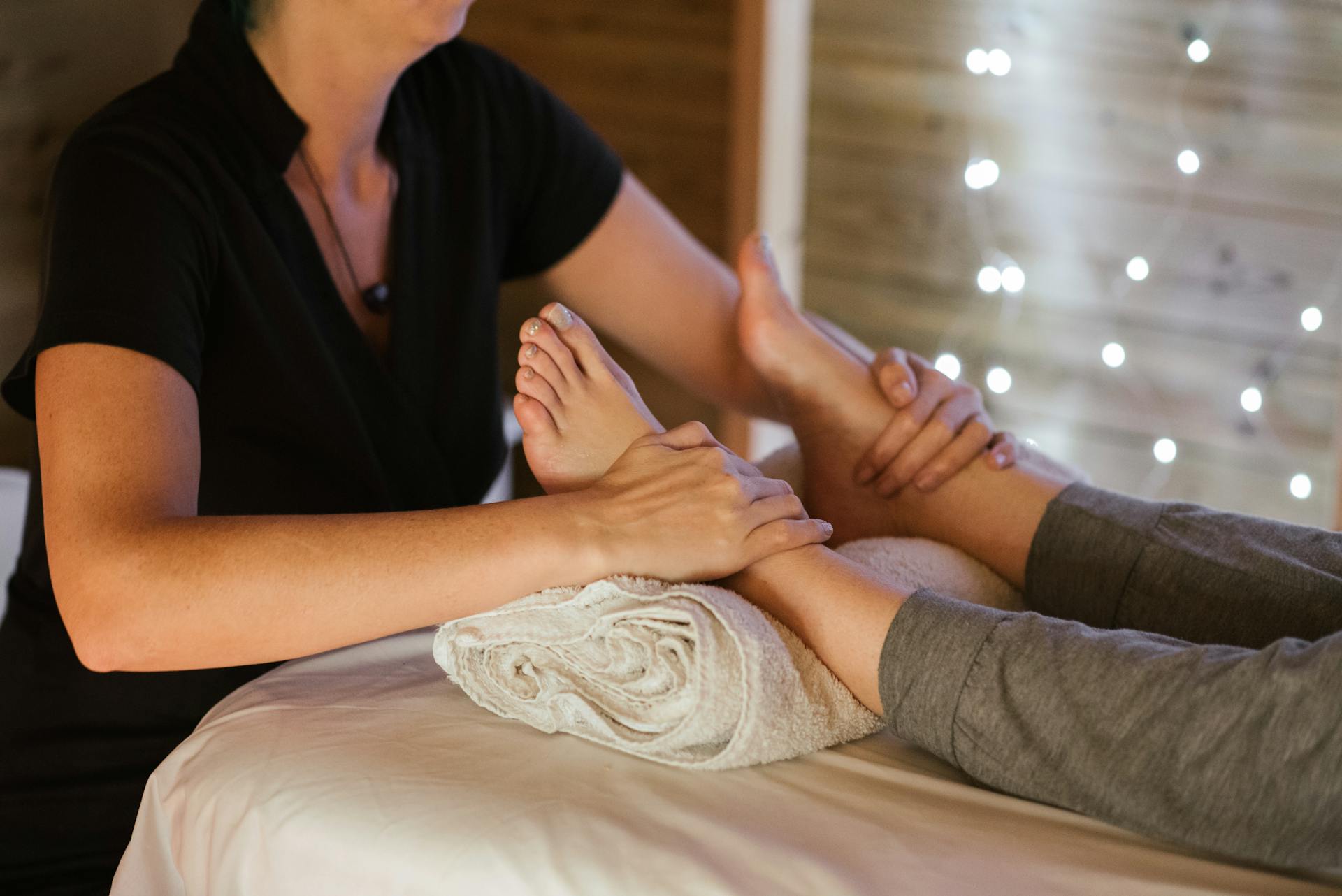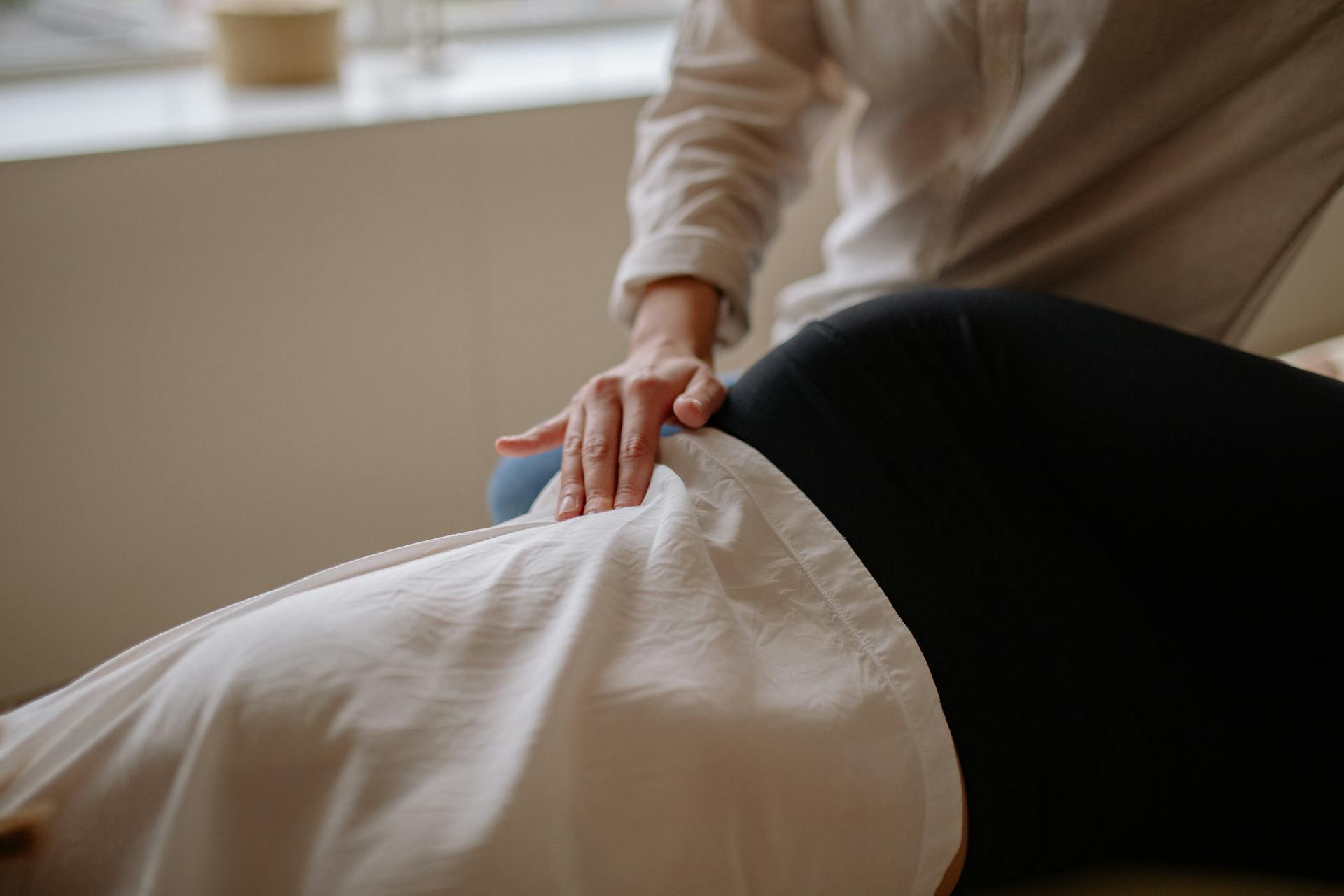Most people know that massage is great for melting away aches, pains, and muscle discomfort. But when it comes to relaxation, there’s almost no better tool you can use. A good massage can induce a sense of calmness, relieve stress, and help you feel more refreshed on a daily basis.
Stress relief and relaxation are often overlooked benefits of massage therapy. But the truth is, they can have a surprising impact on many aspects of your health — from your sleep quality to back pain and more.
Below, we’ll dive into the science behind massage for relaxation, the best types to try, and what to know before starting your own massage routine.
Why Relaxation Is Essential for Your Health
Does relaxation tend to end up at the bottom of your priority list? If so, you’re certainly not alone.
Modern life is busier than ever, which means our energy often ends up consumed by work, family, and trying to maintain a healthy lifestyle. But it might surprise you to find out that relaxation is just as important as these other responsibilities.
Here are some of the reasons why you should make it a point to use relaxation techniques — massage or otherwise — regularly:
- Relaxation has positive effects throughout the body. It can slow your heart rate, calm your breathing, temporarily reduce your blood pressure, and even improve digestion.
- A relaxing nighttime routine can help you get more restful, high-quality sleep.
- Relaxation can help you cope with difficult emotions, such as anger or frustration.
- It can help relax tense, achy muscles. Tools like massage, meditation, and deep breathing are great for easing stress-related muscle tension.
Why Is Massage So Relaxing?
So, why exactly is massage so relaxing? Science has shown that the power of touch can trigger a cascade of physiological effects in the body — and this is what can bring on a sense of calmness and relief.
To be more specific, a good massage:
Activates the Relaxation Response
A moderate-pressure massage can have powerful effects on the parasympathetic nervous system. This is also known as the “rest and digest” system, made of a network of nerves that help the body relax after being stressed.
By activating the relaxation response, massage can lead to several soothing effects — including a calmer heart rate, slower breathing, and reduced feelings of anxiety.
Supports Healthy Sleep
By putting the body in a state of relaxation, massage can also make it easier to fall and stay asleep. In fact, studies have shown that massage therapy can improve sleep quality for a variety of people — including the elderly, younger people, and even those with low back pain.
Alleviates Stress
When you feel stress melt away during a massage, it isn’t just in your mind. A good massage session may help lower levels of cortisol — the hormone responsible for your body’s stress response. In turn, this can lead to reduced sensations of anxiety, along with a boost in your overall mood.
Eases Muscle Tension
In many cases, your body can react to stress by going into “fight-or-flight” mode. This is a natural response that helped prepare our ancestors for danger in the past. Unfortunately, if you’re always feeling anxious, this response can lead to tension and pain in the shoulders, neck, and back.
The good news? Massage is one of the most effective tools for easing muscle tension. By using techniques like gliding and sustained pressure, you can loosen up tight muscles and break up painful, concentrated bands of tissue known as trigger points.
Improves Mental Well-Being
Massage is a great way to support your emotional health and well-being. And for some people, it may even offer benefits for mental health struggles like depression.
Why is massage so good for mental well-being? Well, not only does it give you a chance to recuperate from stress, but it also involves the power of touch — which has been shown to be remarkably beneficial for physical and mental health.
What Are the Best Types of Massage for Relaxation?

From sports massage to trigger point therapy, there are tons of massage styles to choose from. But what’s the best type of massage for relaxation?
If you’re planning a spa visit in the near future, here are some of the most calming modalities to consider trying:
Swedish
Swedish massage is the most common relaxation massage style. It uses a variety of soft, gliding strokes to support healthy blood flow, release muscle tension, and reduce stress.
An important aspect of Swedish massage is that it often involves gliding along the muscles in a way that helps blood flow toward the heart. Its techniques include:
- Petrissage: Kneading, rolling, and squeezing
- Effleurage: Light gliding and flowing strokes
- Friction: Deep side-to-side or circular motions, typically using the thumbs
- Tapotement: Drumming or tapping with the hands and fingers
Shiatsu
Shiatsu massage is a Japanese bodywork style that involves massaging pressure points to promote health and well-being.
In contrast to other massage styles, it doesn’t use direct skin contact or any massage oils. Instead, a masseuse will use their fingers, thumbs, elbows, and hands to work on the muscles over loose clothing. They will also focus on boosting the flow of qi — or life force energy — throughout the body.
Qi is a traditional Asian concept used in techniques like qigong and acupuncture. It may not be rooted in Western science, but many people find qi-focused practices like Shiatsu massage to be incredibly relaxing.
Deep Tissue
Deep tissue massage is the type of massage that many describe as slightly painful — but in a “hurts-so-good” kind of way.
In a deep tissue session, massage therapists use firm strokes to work deeply into the fascia and muscle tissue. Sometimes, they might also use gentler, more sustained pressure to work through knots and other problem areas.
The deep tissue style can be extremely soothing — but on top of that, many people find that it also:
- Boosts mobility
- Relieves aches and pains
- Alleviates stress
- Promote healthy recovery after injuries
Hot Stone Massage
Another relaxing modality to try is called hot stone massage, which uses the power of heat to soothe pain and relieve muscle tension.
In a hot stone session, a massage therapist will use round, smooth stones that have been warmed in a special massage stone heater. They will then align the stones along different parts of your body, such as the spine or legs (usually with a towel or sheet in between to prevent burning).
Throughout the session, the therapist may use relaxing strokes similar to those in Swedish massage. As the stones cool off, they may also use them to massage the skin directly.
Therapeutic vs. Relaxation Massage
If you’ve been considering massage, you might wonder: What’s the difference between therapeutic vs. relaxation massage?
Put simply, the main difference between these two styles is their focus: relaxation or symptom relief.
For example, you’d likely receive a therapeutic massage if you visited an integrative healthcare center for chronic tendonitis pain. This style can be relaxing – but instead of focusing on all-over relief, it targets specific pain points and surrounding areas.
In other words, a therapeutic massage is built around a goal of relieving certain symptoms. This could be pain, muscle tension, or low range of motion in a specific joint.
Relaxation massage, on the other hand, is more of a whole-body experience commonly provided at spas. It may still involve working on minor pain points, like achy back muscles or sore shoulders. But overall, it will be a more holistic approach to stress relief.
4 Relaxing Self-Massage Techniques for Busy Days

If you lead a high-stress lifestyle, the good news is that you don’t have to visit a spa to unwind with a massage. Even if you have just a few spare minutes per day, here are four relaxing self-massage techniques that you can try at home:
Foot Self-Massage
If you’re looking for a quick yet effective way to try massage for relaxation, foot massage is a great place to start. Not only can it help you soothe foot and heel pain, but it can also provide a deep sense of relaxation and relief.
In 2011, one study even found that self-reflexology foot massage helped relieve stress and fatigue in female undergraduate students.
To try it, here’s an easy, 10-minute foot self-massage technique you can use at home:
- Sit in a comfortable chair, and cross one foot over your opposite knee.
- Use your thumbs to massage in light-pressure gliding motions, starting at the heel and moving toward your toes. Repeat for 1 to 2 minutes to warm up the muscle tissue.
- Then, use your thumbs to glide outward from the middle of the foot. Start at the ball of your foot and make your way down to the heel. Repeat for 2 to 3 minutes.
- Finally, use light pressure from your knuckles to continue gliding along the foot for 2 to 3 minutes more. (Tip: Feel free to spend a few extra seconds working on the heel during this step.)
- Massage for a total of 5 to 7 minutes on each foot.
Tennis Ball Back Massage
When you’re stressed out, your back muscles are often the first areas to feel the effects of it. This is because stress can affect your breathing patterns, daily habits, and posture — all of which can play a role in back pain.
Fortunately, this simple tennis ball back massage can help you bring relaxation to the muscles that need it most:
- Start by placing a tennis ball inside of a long sock.
- Stand with your back facing a wall.
- Holding the end of the sock, toss the tennis ball over your shoulder.
- Lean back so that the ball is in place between your back and the wall.
- Then, slowly move your body up, down, and side-to-side to roll the ball over your muscles.
- Adjust the sock’s height as needed to target different muscles along the back.
- If you find a trigger point (knot), hold the ball in place with moderate pressure for 5 to 10 seconds.
- Massage for 5 to 10 minutes daily as needed.
Face and Neck Self-Massage
When it comes to massage for relaxation, it’s important not to overlook the muscles in the face, jaw, and neck. Stress can cause these muscles to hold onto a significant amount of tension — and over time, it can result in symptoms like jaw pain, neck aches, and even tension headaches.
Luckily, a gentle face and neck massage could bring some much-needed relief from these symptoms. Simply:
- Take a deep breath in, and begin to massage your temples in light, circular motions for 30 seconds.
- Continue to massage along the hairline, moving up towards your forehead and making your way down behind the ears.
- Then, spend some time working on the jaw muscles. Mindfully release any tension in your jaw, and use your fingers to massage in circular motions for 30 seconds more.
- Finally, use your knuckles to glide along both sides of the back of your neck for 1 to 2 minutes.
- Repeat these steps for a total of 5 to 10 minutes.
Foam Rolling Back Massage
Have you been dealing with stress-related tension in your mid-to-upper back? If so, a simple foam rolling routine could be just what you need to massage it out.
Here are the steps:
- Lay on a comfortable surface, and place the foam roller horizontally across your middle back.
- Bend your legs so that your knees are pointing upward, and lock your fingers behind your head.
- Use your legs to lift your body off the ground.
- Using moderate pressure, slowly roll until the foam roller reaches your upper back.
- Gently roll back until it reaches your mid-back, being careful not to roll the lower spine.
- Repeat for 1 to 2 minutes.
Tips for Deeper Relaxation Massage
If you’re looking for additional ways to bring relaxation to a massage session, you can try tools like:
- Aromatherapy: Scents like lavender, lemon, and jasmine are all great options for inducing a sense of calm. Simply add a few drops into a lotion or body oil, and apply to the skin before getting started.
- Heat: Warmth in the form of a heating pad or warm towels can help your muscles release deep stress-related tension.
- Music: Calming music is a great way to keep your mind relaxed and centered during massage.
- Mindfulness: Mindfulness, or the practice of being in the present moment, is a powerful tool for anxiety and stress relief. To reap the benefits of mindfulness during massage, practice paying attention to your breath and how your muscles feel throughout the session.
When to Book a Massage for Relaxation
Knowing when to prioritize your own self-care can be challenging — especially if it tends to fall to the back burner sometimes. So, here are some signs to look for if you’re wondering whether it’s time to book a massage for relaxation:
- You’ve felt an uptick in negative emotions lately, such as frustration or irritation
- You’re dealing with high stress due to work, school, or home life
- You’re having trouble falling or staying asleep
- You’ve noticed muscle tension in your neck, jaw, shoulders, or back as a result of stress
How Often Should You Use Massage?
Daily self-massage can be a beneficial way to curb minor stress and anxiety. But if you’re looking for deeper relief, many people find that it’s helpful to schedule a 60-minute session with a licensed massage therapist once or twice a month.
What to Consider Before Starting Massage Therapy
While relaxation massage is a safe self-care tool for most people, it may be best to avoid it when you’re dealing with certain health conditions. Talk to your doctor before getting started if you have:
- Any current infections
- An acute injury, such as a broken bone or muscle tear
- A heart or circulatory condition
- Uncontrolled high blood pressure
- A history of blood clotting disorders
- Skin conditions or open wounds
- Any conditions affecting the kidneys, liver, or organ function
- Any other health condition that hasn’t previously been OK’d for massage by your doctor
The Takeaway
Massage therapy can help activate your body’s relaxation response, reduce cortisol, break up muscle tension, and even improve sleep quality. And the best part is that it doesn’t have to be time-consuming or complicated to reap the benefits at home. Instead, you can try hands-on techniques like those covered above for daily relaxation and stress relief.
Finally, it’s important to remember that although massage can provide many natural benefits, it may not always be right for everyone. If you’re unsure about how it may interact with any health conditions — such as those that affect the nerves, bones, or heart — be sure to check with your doctor before getting started.
For Effortless Relaxation at Home
If you’re ready to make restorative massage a daily part of your self-care routine, the tools from MedMassager can help.
Explore MedMassager’s physician-trusted massage tools today, or learn more about the many ways they can support your health and well-being here.



